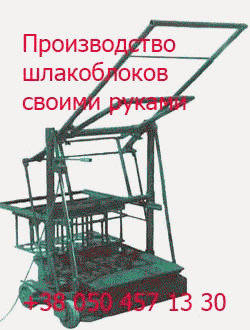Rutile is formed primarily by the crystallization of magma with high titanium and low iron contents, or by the metamorphosis of titanium-bearing sediments or mag — matites. The rutile concentrations in primary rocks are too low for commercial use, therefore, only sands in which rutile is accompanied by zircon and/or ilmenite and other heavy minerals […]
Архивы рубрики ‘Industrial Inorganic Pigments’
Ilmenite and Leucoxene
 17 сентября, 2015
17 сентября, 2015  Pokraskin
Pokraskin Ilmenite is found worldwide in primary massive ore deposits or as secondary alluvial deposits (sands) that contain heavy minerals. In the massive ores, the ilmenite is frequently associated with intermediary intrusions (Tellnes in Norway and Lake Allard in Canada). The concentrates obtained from these massive ores often have high iron contents in the form of […]
Natural Raw Materials
 17 сентября, 2015
17 сентября, 2015  Pokraskin
Pokraskin Titanium is the ninth most abundant element in the earth’s crust, and it is always found in combination with oxygen. The most important titanium minerals are shown in Table 2.4. From the natural titanium minerals, only ilmenite, leucoxene and rutile are of economic importance. Leucoxene is a weathering product of ilmenite. The largest titanium reserves […]
Raw Materials [2.10, 2.11]
 16 сентября, 2015
16 сентября, 2015  Pokraskin
Pokraskin The raw materials for TiO2 production include natural products such as ilmenite, leu — coxene, and rutile, and some very important synthetic materials such as titanium slag and synthetic rutile. Production figures for the most important titanium-containing raw materials are listed in Table 2.3 [2.4]. Total production of titanoferous raw materials, grew in 2000 to […]
Surface Properties of TiO2 Pigments
 16 сентября, 2015
16 сентября, 2015  Pokraskin
Pokraskin The specific surface area of commercial TiO2 products can vary between 0.5 and >300 m2 g-1 depending on its intended use. The surface of TiO2 is saturated by coordinatively bonded water, which forms hydroxyl ions. Depending on the type of bonding of the hydroxyl groups to the titanium, these groups possess acidic or basic character […]
Chemical Properties
 16 сентября, 2015
16 сентября, 2015  Pokraskin
Pokraskin Titanium dioxide is amphoteric with very weak acidic and basic character. Accordingly, alkali metal titanates and free titanic acids are unstable in water, forming amorphous titanium oxide hydroxides on hydrolysis. Titanium dioxide is chemically very stable, and is not attacked by most organic and inorganic reagents. It dissolves in concentrated sulfuric acid and in hydrofluoric […]
Physical Properties
 14 сентября, 2015
14 сентября, 2015  Pokraskin
Pokraskin Of the three modifications ofTiO2, rutile is the thermodynamically most stable one. Nevertheless, the lattice energies of the other phases are similar and hence are stable over long periods. Above 700 °C, the monotropic conversion of anatase to rutile takes place rapidly. Brookite is difficult to produce, and therefore has no value in the TiO2 […]
Titanium Dioxide
 14 сентября, 2015
14 сентября, 2015  Pokraskin
Pokraskin Titanium dioxide [13463-67-7], TiO2, Mr 79.90, occurs in nature in the modifications rutile, anatase, and brookite. Rutile and anatase are produced industrially in large quantities and are used as pigments and catalysts, and in the production of ceramic materials. Titanium dioxide is of outstanding importance as a white pigment because of its scattering properties (which […]
White Pigments
 13 сентября, 2015
13 сентября, 2015  Pokraskin
Pokraskin White pigments include TiO2, zinc white (ZnO), zinc sulfide and lithopone (a mixed pigment produced from zinc sulfide and barium sulfate). Historical white pigments like white lead (basic lead carbonate) and chalk are of no industrial importance. White fillers are outside the scope of this book. The optical properties of white pigments are a result […]
Miscellaneous Pigment-Binder Systems Plastics
 12 сентября, 2015
12 сентября, 2015  Pokraskin
Pokraskin Specifications for thermoplastics are given in Table 1.1 (“Thermoplastics”). Specifications for poly(vinyl chloride) are also listed (“PVC”). These specifications include methods for producing basic mixtures for testing pigments in PVC and for specimen preparation. A method is described for determining bleeding, i. e., the migration of coloring matter into a material in contact with the […]
 Опубликовано в рубрике
Опубликовано в рубрике 
